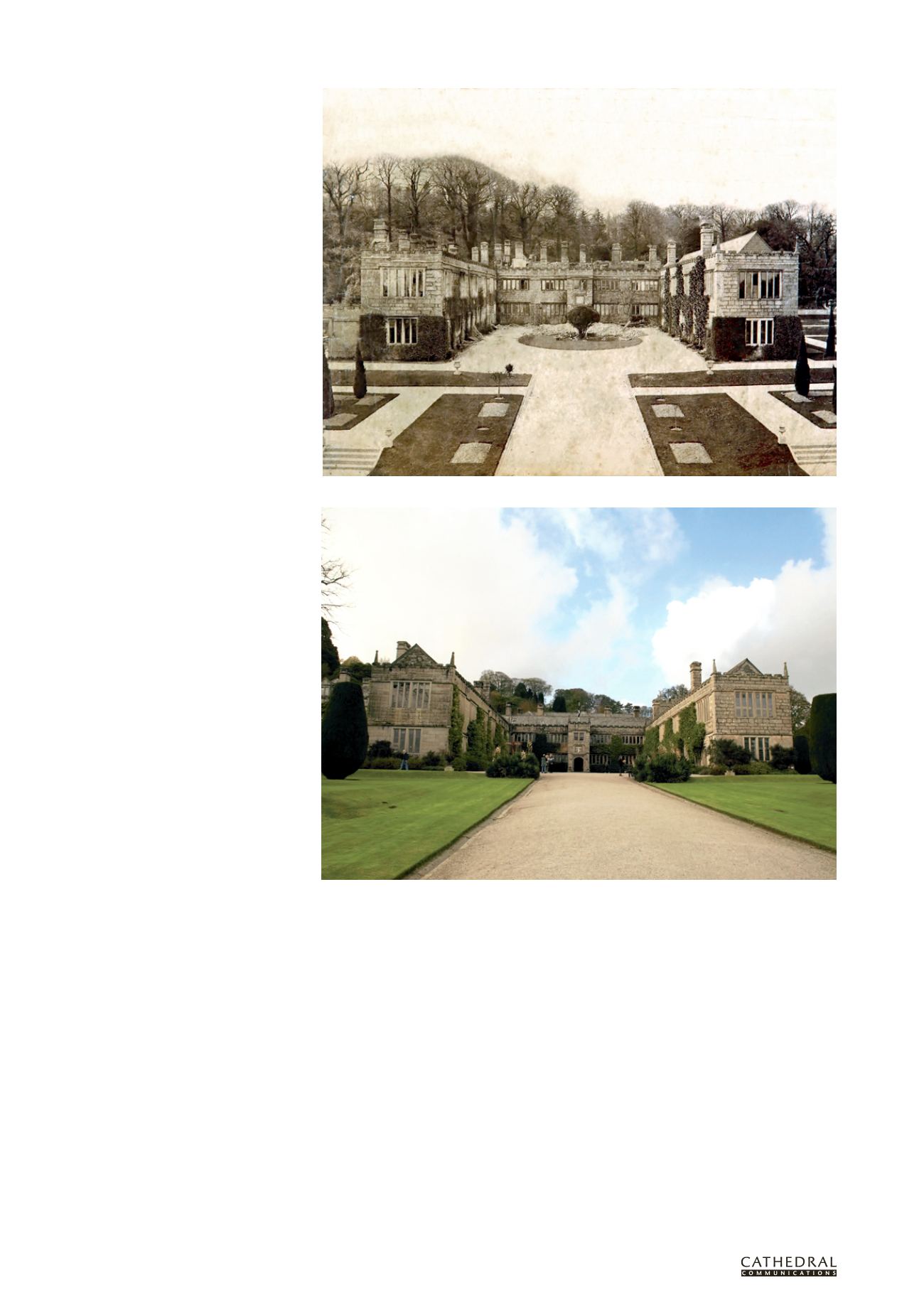
1 5 2
T H E B U I L D I N G C O N S E R VAT I O N D I R E C T O R Y 2 0 1 4
T W E N T Y F I R S T E D I T I O N
4.2
SERVICES & TREATMENT :
HEATING & LIGHTING SER VICES
In consequence, Lanhydrock now has
nine vertical compartments which, added to
the Victorian concrete vaulted ceilings, create
around 30 fire-resistant boxes across 100
rooms and three floors. The objective was to
ensure that these compartments would offer
a minimum of 60 minutes protection. All of
the interventions described above have been
certificated by an approved contractor to show
that intumescent products have been installed
in accordance with the manufacturer’s
instructions.
ACTIVE MEASURES
A necessary part of the project was to replace
the old unsupported fire alarm system. As
part of the specification, prior to installation
all existing fire-graded cabling was tested
for continuity and certificated and all new
cable runs, where required, were installed in
mineral-insulated cables which have a higher
fire integrity and longer life span than PVC
cabling. Careful thought was given to pipe
work and cable runs in order to minimise
further damage to the property. During
the design phase it was decided that any
new system must include a fully monitored
intelligent fire panel. Hence, each of the 350
smoke (or heat) sensors, five VESDA units
(very early smoke detection apparatus) and
manual call points are coded with a unique
address which on fault activation will provide
a text message on the panel and, for remote
users, a localised pager call via a radio link.
Furthermore the panel interfaces with electro-
magnetic door-release systems, gas leakage
alarms, fusible links on gas fired boilers, a self-
setting fire curtain separating high risk areas
from historic interiors and remote signalling
to the monitoring station.
One element of the Regulatory Reform
(Fire Safety) Order that has a daily impact on
the running of the house is the duty to remain
accountable for the upkeep and maintenance
of these systems. Annual reviews of the
fire risk assessments must be carried out
and meticulous records kept of fire alarm
and emergency lighting testing, evacuation
exercises and fire safety training. Annual
testing and certification must also be carried
out for fire-fighting water supplies, back-up
battery packs, gas boilers, gas supply pipe
work, extinguishers, chimneys that host open
fires or extraction systems and electrical
installations.
STATUTORY PROTECTION
AND CURATORSHIP
Modern interventions in historic building
fabric always raise difficult questions. The
answers can be found by applying sound
conservation principles and by understanding
how the heritage asset functions and
performs. Indeed, the success or failure
of a project can depend on very basic
decisions such as the careful assessment of
the longevity, performance and aesthetic
appearance of intumescent products
before they are installed or applied.
A greater challenge is the curatorial
duty not to destroy or damage the very
heritage that we are trying to protect. Our
aspiration to protect Lanhydrock through
applying pragmatic and effective solutions
was displayed by our refusal to upgrade a
handsome 19th-century drawing room door
(with integral Aesthetic Movement glass)
to create a protected escape route. Rather
than apply fire-rated secondary glazing,
intumescent varnish on the glass or a fire
shutter/curtain above the door, we came
to a more sensible resolution which was to
consider the volume of the room in terms of
the amount of smoke likely to be generated
by its fabric and contents in the period
required to evacuate the building safely, and
the ability to contain this volume of smoke
within its barrel-vaulted ceiling. This simple
risk assessment saved money, time and, more
importantly, unnecessary damage to the
historic interiors.
Another potentially sensitive intrusion
on an historic interior is the installation
of emergency lighting, fire signage and
self-closing fire doors to protect the means
of escape. One way to avoid unsightly or
temporary escape lighting is to convert
the main historic lights to double-up as
emergency lighting. This can be done by
fitting battery packs connected to inverter
switches. The inverter component produces
230v AC from a 12v DC back-up battery, while
the switch component automatically switches
power supplies to the battery in the event of a
mains power failure.
Excessive signage and self-closing devices
can be avoided through well managed and
practiced evacuation procedures where
visitors are chaperoned from the building to
outdoor muster points by trained volunteers
Lanhydrock in 1881, soon after a major fire
Lanhydrock today (Photo: NTPL/Lee Searle)


